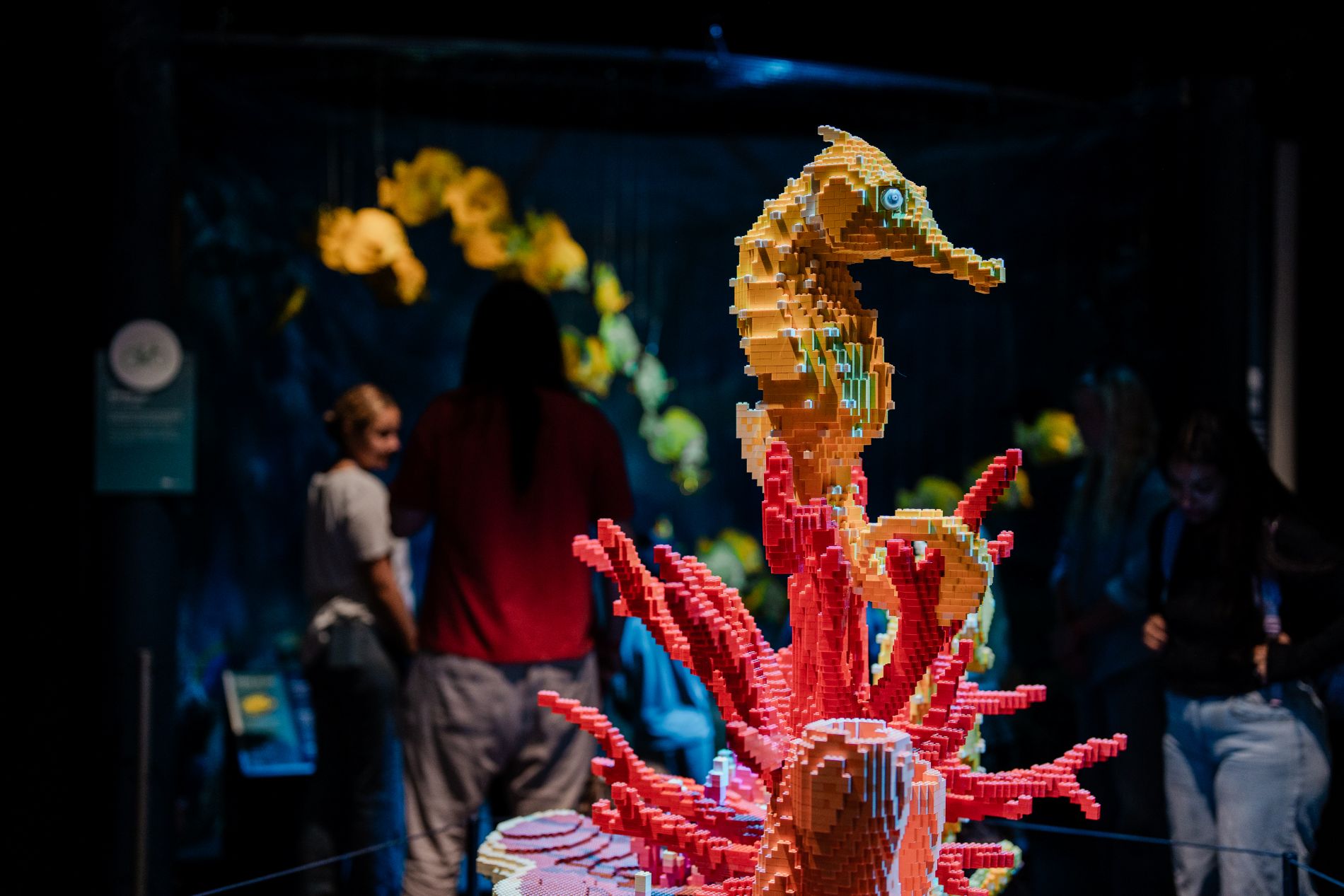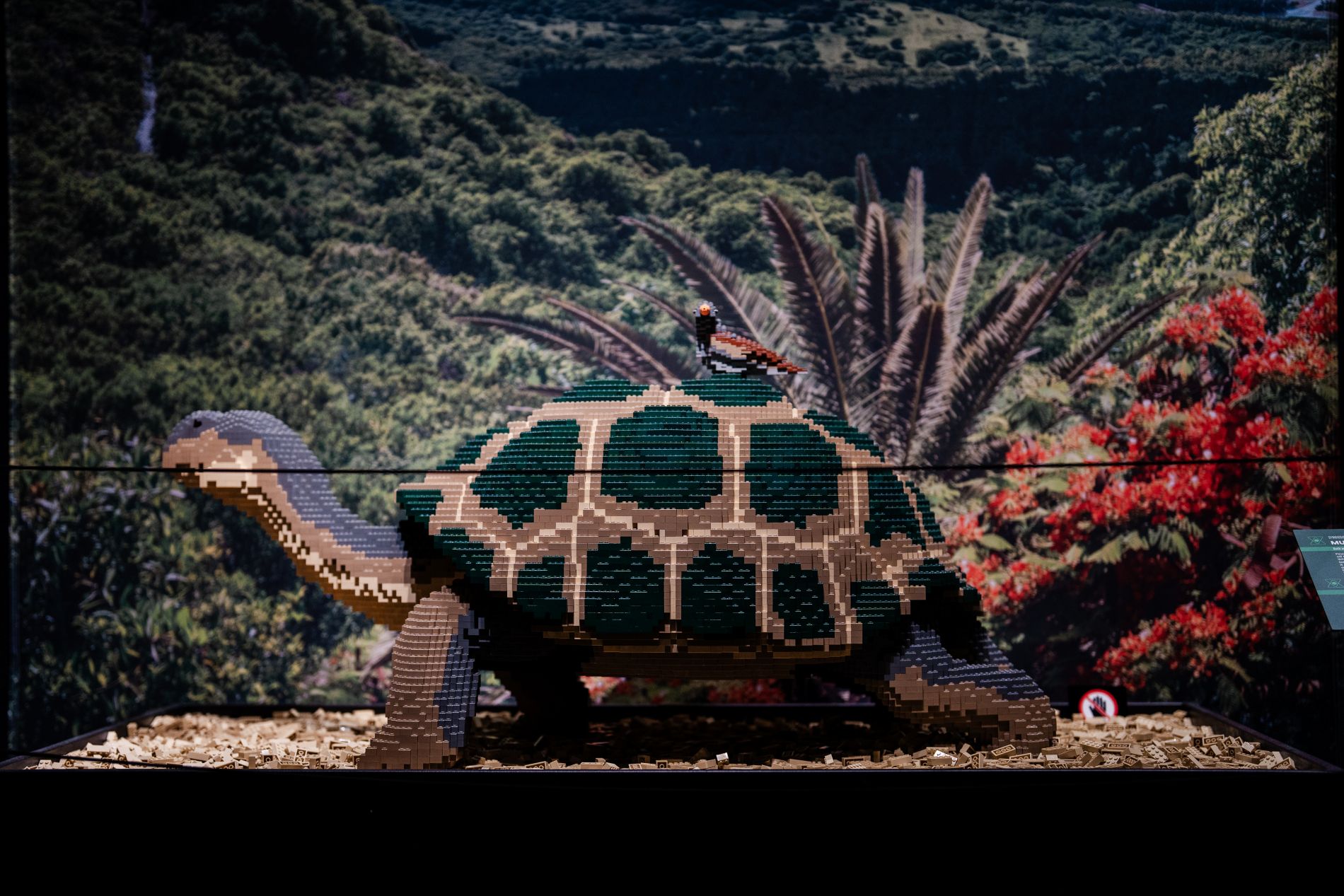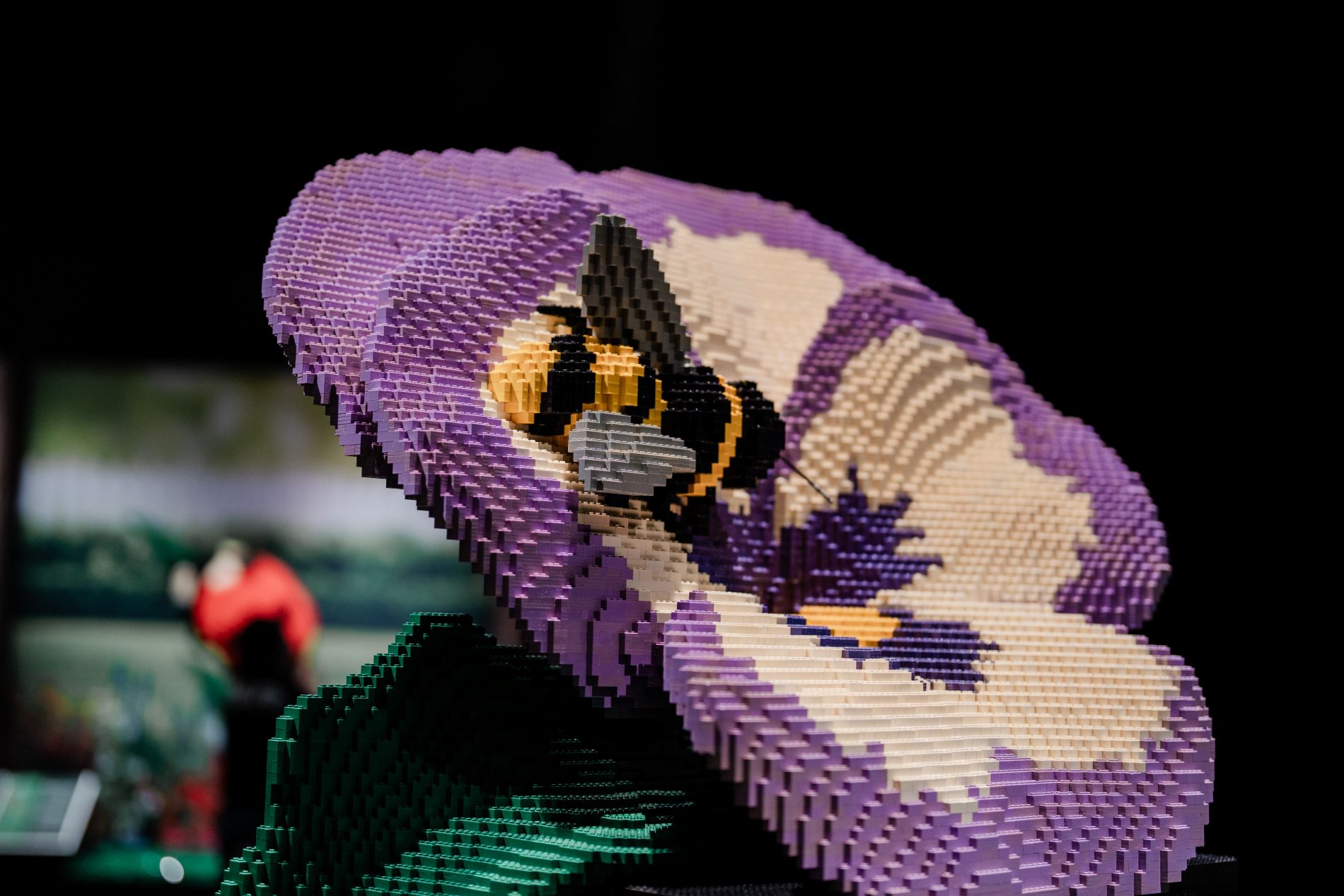CATALYST
DENVER MUSEUM OF NATURE & SCIENCE ONLINE MAGAZINE
Surprising Symbiosis: Nature’s Unexpected Partnerships
Discover 5 Incredible Ways that Animals Coexist — Recreated with LEGO® Bricks

This sculpture, "Kneeling Gardner," created by artist Sean Kenney in 2013 took 255 hours and 34,340 LEGO® bricks to build. (Photo/ Mio Sison III)
Many different plants and animals live together side by side and depend on each other for survival. These connections between species are called “symbiotic relationships.” From coral reefs to African grasslands to your own backyard, these partnerships are critical for survival, growth and reproduction.
The word symbiosis comes from the Greek for “living together.” It doesn’t always mean a friendly arrangement. Sometimes both species benefit, sometimes only one does and sometimes one benefits at the other’s expense. These interactions can shape evolution, alter food webs, and reveal how deeply life on Earth is interconnected.
At the heart of the “Brick Planet: A Magical Journey Made with LEGO® Bricks” temporary exhibition is the symbiosis of mutualism, where both species benefit. Here are a few amazing examples of species you can find in the exhibition, brought to life in stunning sculptures.
Coral and Algae: Provide an Incredible Home for Biodiversity

This sculpture, "Coral Reef," created by artist Sean Kenney in 2016 took 564 hours and 88,516 LEGO® bricks to build. (Photo/ Mio Sison III)
Corals are animals that build massive reef structures, but they depend heavily on microscopic algae called zooxanthellae. The algae live inside coral tissues and photosynthesize, using sunlight to produce sugars and oxygen. Much of this energy is passed to the coral, providing up to 90% of its food. In return, the coral provides the algae with a protected home and nutrients like carbon dioxide and nitrogen, which the algae need for photosynthesis.
This partnership is so important that coral reefs, among the most diverse ecosystems on Earth, wouldn’t exist without it. But rising ocean temperatures and pollution can stress corals, causing them to expel their symbiotic algae in a process called bleaching. Scientists are now experimenting with “coral probiotics” and heat-resistant algae strains to restore damaged reefs.
Galapagos Tortoise and Finch: Feed and Clean

This sculpture, "Galapagos Tortoise," created by artist Sean Kenney in 2015 took 290 hours and 23,317 LEGO® bricks to build. (Photo/ Mio Sison III)
The Galapagos finch flies in front of the tortoise to show their presence, at which point the tortoise then stretches out its neck and legs so that the bird can eat ticks and parasites off the tortoise’s skin and shell. This means that the tortoise is relieved of parasites and the finch gets an easy snack, benefiting both species. Mutual grooming behaviors aren’t unique to the Galapagos, oxpecker birds do something similar with rhinos and buffalo in Africa!
Pansy and Bee: Provide Nectar and Spread Pollen

This sculpture, "Pansy and Bee," created by artist Sean Kenney in 2015 took 240 hours and 29,314 LEGO® bricks to build. (Photo/ Mio Sison III)
Flowering plants and their pollinators have developed special mutualistic relationships; pollinators are essential for many plants to reproduce! Pollinators are insects, like bees, or animals, like hummingbirds, that carry pollen between flowers. In this case, bees collect their food nectar from flowers like pansies and unintentionally carry pollen from one bloom to another, helping the plant reproduce.
Plant and pollinator relationships are vital to our food supply. In fact, scientists estimate that about one in every three bites of food you eat depends on pollinators like bees. The U.S. alone has over 3,500 species of native bees supporting crops and wild plants alike.
Zebra and Wildebeest: Clear Hard Grass and Smell Predators

This sculpture, "Wildebeast and Zebra," created by artist Sean Kenney in 2016 took 875 hours and 124,794 LEGO® bricks to build. (Photo/ Taran Volckhausen)
Wildebeest and zebra often travel together during the Great Migration, when millions of animals move across the Maasai Mara and the Serengeti in search of fresh grazing grounds and water. Though they’re both herbivores, they eat different grasses; zebras prefer tall, tough grass, which clears the way for softer grass preferred by wildebeest.
Even their senses complement each other. Zebras have excellent eyesight and hearing, while wildebeest have a sharper sense of smell. By sticking together, they increase their chances of spotting predators and surviving the journey.
Monarch and Milkweed: Pollination and Protection

This sculpture, "Monarch Caterpillar," created by artist Sean Kenney in 2018 took 438 hours and 46,950 LEGO® bricks to build. (Photo/ Imagine)
Monarch butterflies are perhaps the most well-known and beloved butterflies in North America, and they depend on one plant for survival: milkweed. Monarch caterpillars must eat milkweed leaves, which contain toxins that transfer to the caterpillars, a defensive gift from the plant that makes them unpalatable to predators!
Adult monarchs also drink nectar from milkweed flowers and pollinate them in the process. Without milkweed, monarchs can’t complete their lifecycle, which is why conservationists encourage planting native milkweed to support this threatened species.
Where Nature Provides the Building Blocks for Creative Inspiration and Scientific Discovery

Children imagine and construct their own creations at a LEGO® brick build table in "Brick Planet: A Magical Journey Made with LEGO® Bricks." (Photo/ Mio Sison III)
Want to see how these amazing partnerships come to life — in LEGO® bricks and in nature? Come explore Brick Planet at the Denver Museum of Nature & Science and discover the incredible connections that keep our planet thriving.
Learn more, here!
Winter 2025
In This Edition
-
Celebrating 30 Years of Prehistoric Journey
The Exhibition You Grew Up with Is Still Full of New Discoveries
-
Surprising Symbiosis: Nature’s Unexpected Partnerships
Discover 5 Incredible Ways that Animals Coexist — Recreated with LEGO® Bricks
-
Museum Scientists Discover Oldest Snapping Turtle Ever Found
This Ancient Species of Snapping Turtle Lived Just After the Dinosaurs Went Extinct
-
Fueling Discovery: The Power of Individual Support and Federal Grants
The Behind-the-Scenes Support that Helps Make What We Do Possible
-
New Laws of Notion Release!
Institute for Science & Policy Latest Podcast Season Explores Wolf Reintroduction
Share this:
